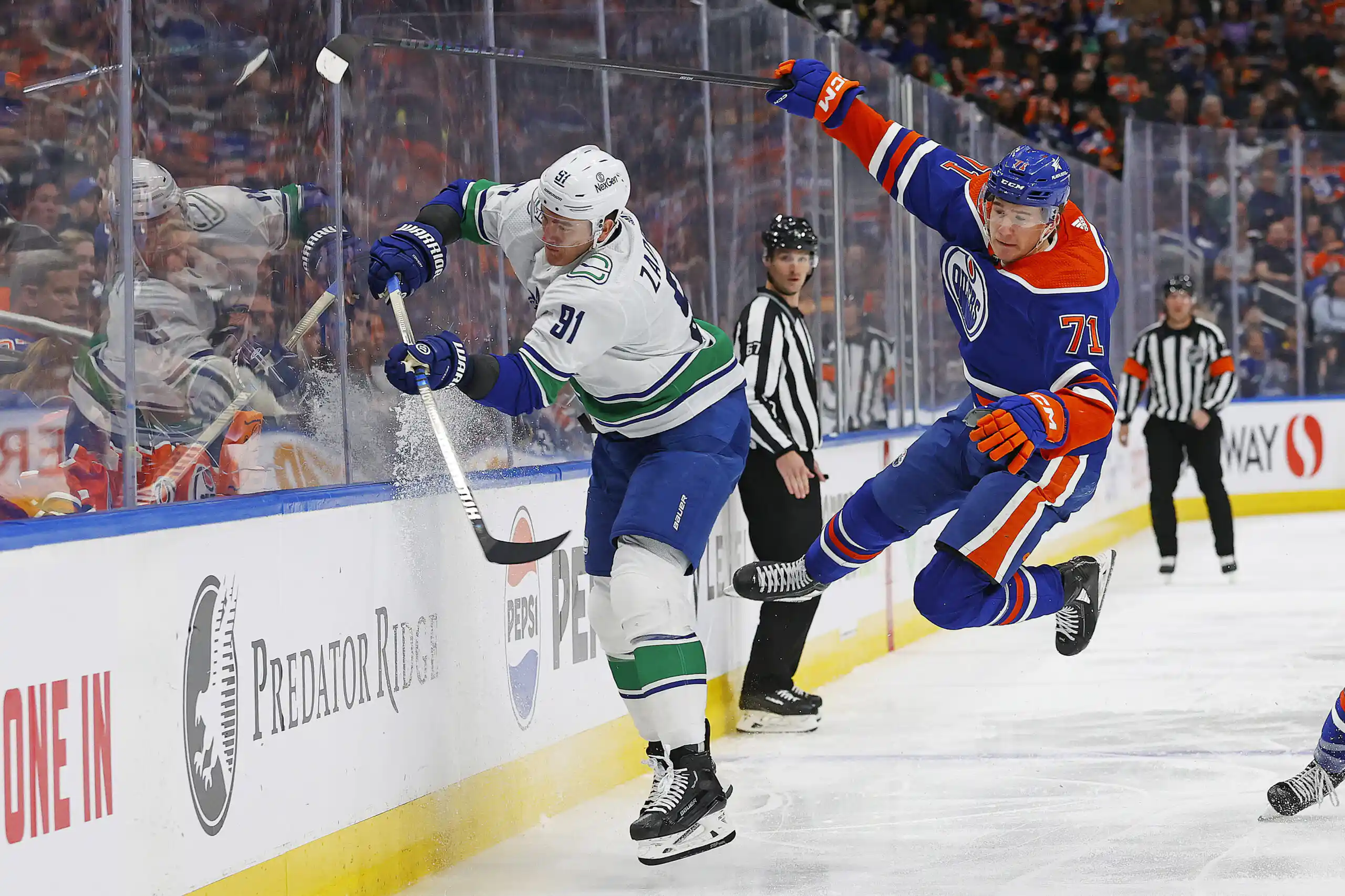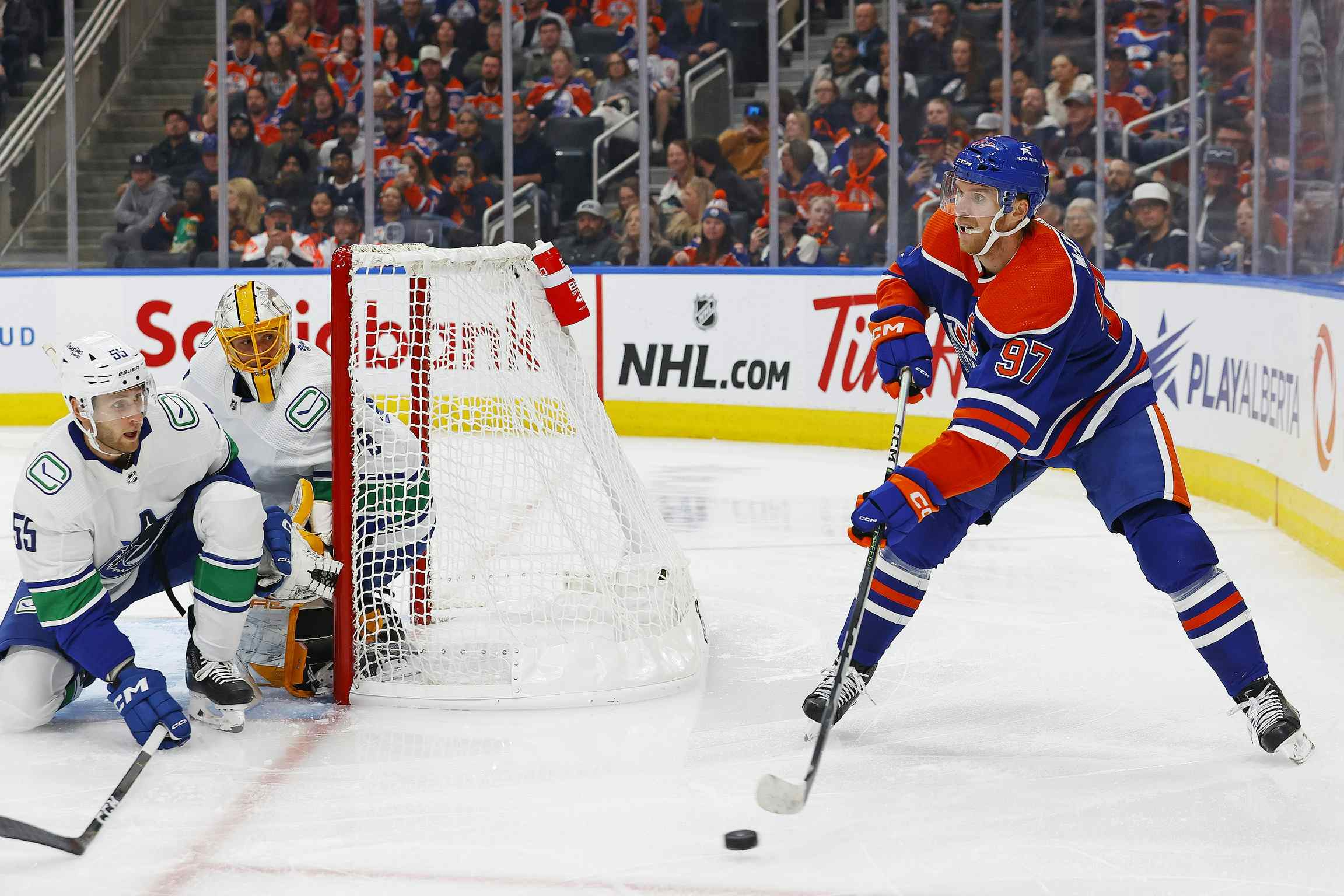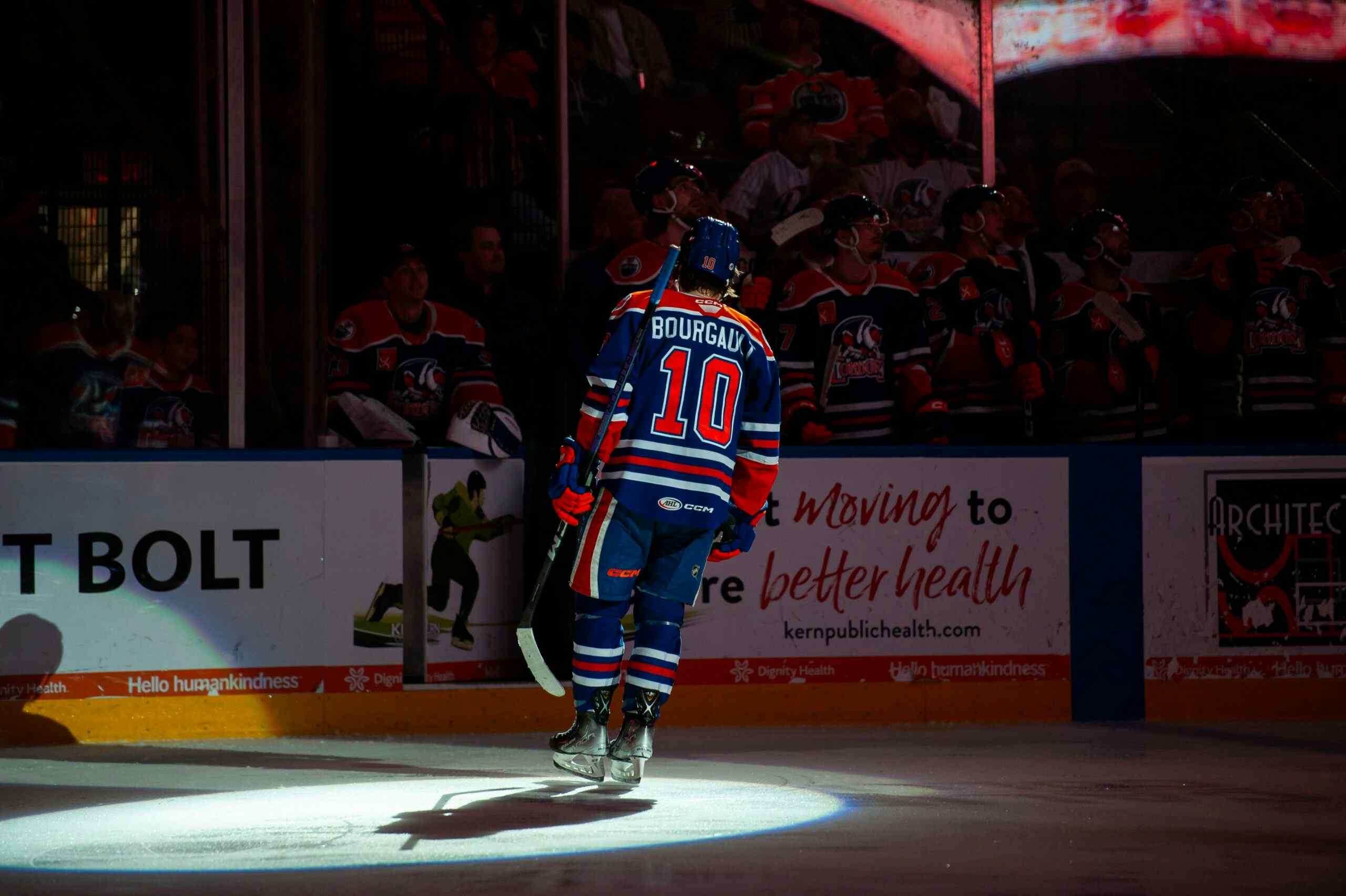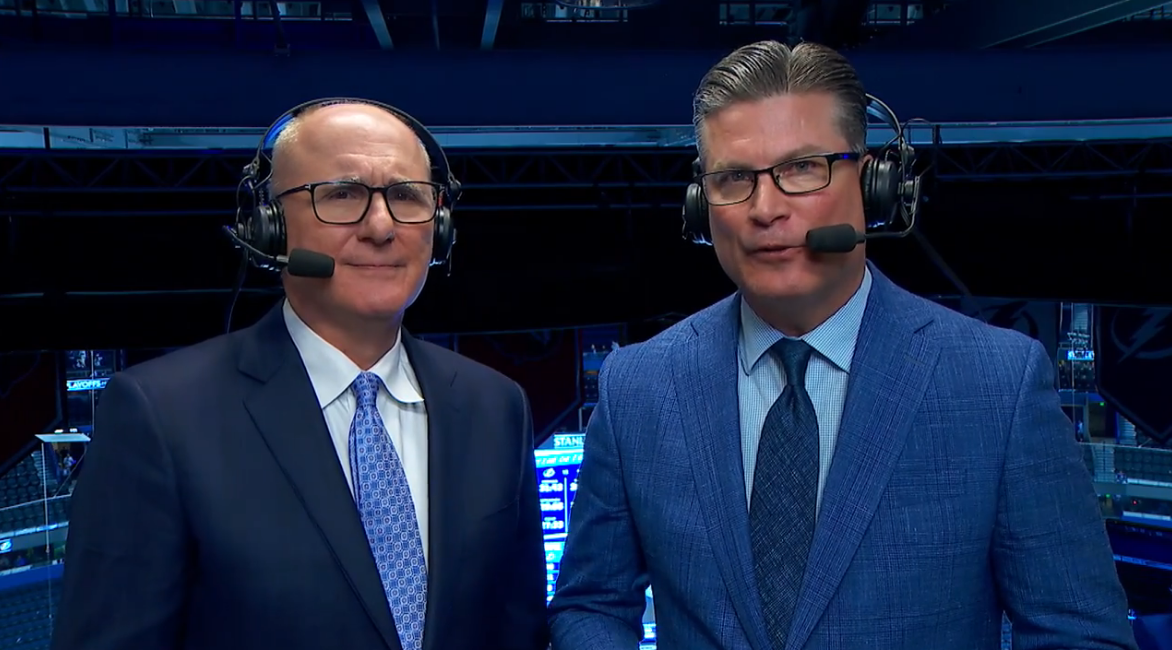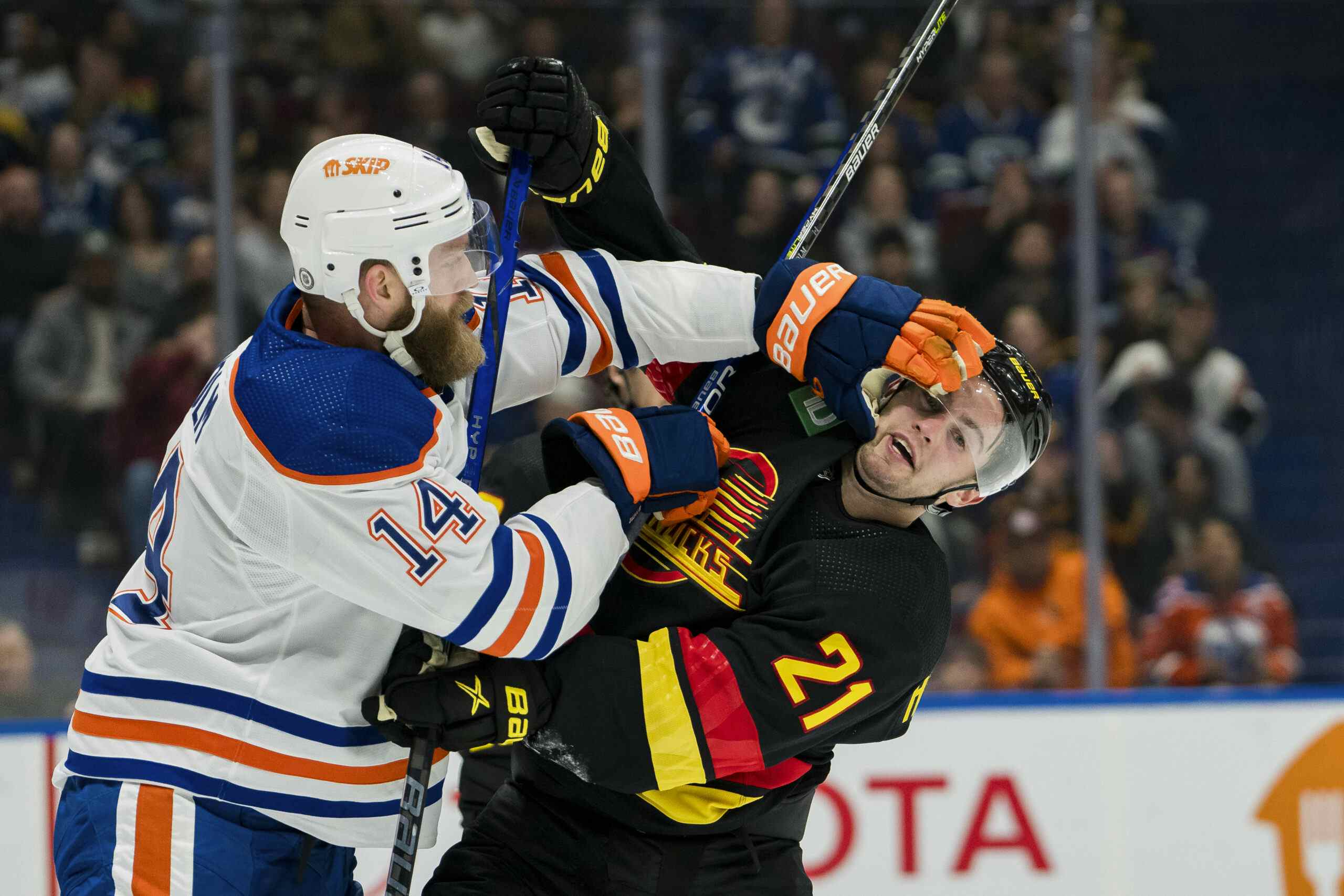Should Oilers Draft Askarov with 14th Pick?
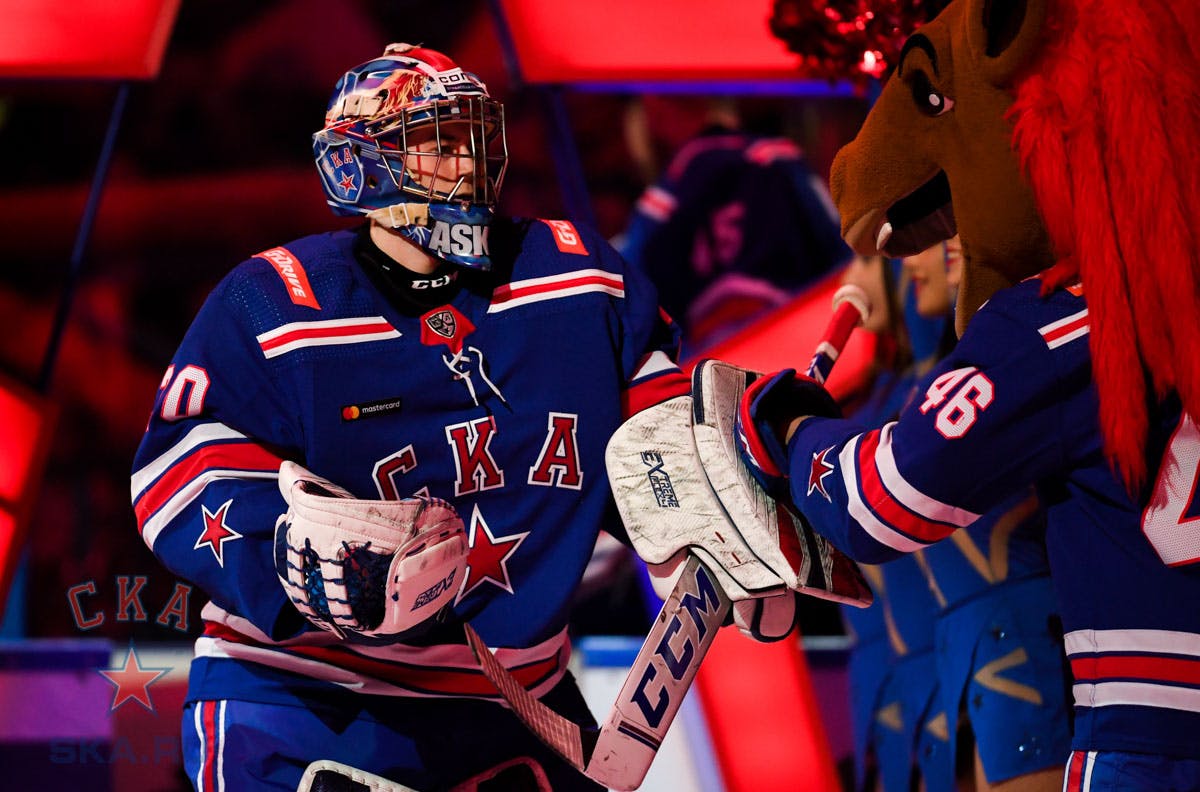
By Jason Gregor
3 years agoIn the early 2000s, teams weren’t afraid to draft goalies in the first round. Between 2000-2006 there were 20 goalies taken in the first round, and eight of them went top-10.
But the mindset changed, and since 2007 only nine goalies have been drafted in the first round and none in the top-10.
Could that change this year with highly-touted Iaroslav Askarov? (He spelt his first name like that on his Central Scouting Sheet (capital “I”), so I will go with that spelling over Yaroslav.)
Every draft ranking I’ve read has him going in the first round, and most have him in the top half of the draft. I’d be surprised he was available at #14 for the Oilers.
Carolina desperately needs a top goalie prospect. Even Buffalo at #8 could use one, but if Askarov is available at #14 I wonder if Ken Holland would take him. Holland is a former goalie, and he might have a better feel for goalies, but history tells us it is still difficult to project what they will look like in the future.
I asked Kevin Woodley from In Goal Magazine and NHL.com a few questions about Askarov.
Gregor: What are his best strengths?
Woodley: His biggest strength is mobility/movement. In particular his down game and moving from his knees. Not a stretch to say it would already be among best in the NHL right now.
I’m not putting this in order, just tying them all together because of how they relate.
Next would be flexibility which gives him excellent “length” rather than just ideal goalie size at 6’3”. His flexibility allows him to stay over his knees and generate extension with his upper body and arms over top of those incredible legs
In a recent NHL.com profile, Nikolai Khabibulin said, “I never really try to compare but he’s got legs like Vasilevskiy.”
Askarov’s overlooked strength is he handles the puck exceptionally well. Khabibulin said he’s as good, if not better than any goalie in the KHL already. And the confidence with which he handles the puck speaks to an ability to process the patterns that ultimately make up a goalie’s ability to read the game, or what some would call “good hockey sense.”
How important is it? Look what it did for Shesterkin and Rangers defending.
Gregor: Does playing in KHL impact how he projects to North America ice and style of play?
Certainly not a disadvantage if he gets to play in one of the top league’s outside the NHL at this age and for a couple more years. The “pass-pass-pass-pass, dust it off from a wide-open look and pass once more” style can be a positive in terms of reinforcing the patience on skates and edge work increasingly necessary to have success in the NHL as it because more of an east-west game. It does mean there will be an adjustment to rink size and a more direct style of play once he comes over, but Shesterkin needed only half a season in the AHL to get acclimatized so it’s not that big a deal.
Style-wise, the only other adjustment I’d be worried about after watching tape is the need for more active hands. Most will associate that statement with the glove, but it’s just as much about his blocker and stick, and the need to steer low shots into less dangerous areas versus making all low saves with his pads. And the amount of second chances he seems to leave, though to be fair a lot of it is right in front of him and he certainly has the ability to recover on any that do get away from him.
Gregor: Would you take him at #14 if he’s available?
Yes, but admittedly I’m in the goalie union. I realize most will see position players as being able to have an impact sooner. If you have other needs you are more certain can be filled by a player in this spot and sooner, I would understand filling them first in the draft, especially with a buyer’s market in unrestricted free agency for goaltenders. There are several proven goalies on the trade market, presumably available for less than the 14th overall pick, and there are other untapped means to find goaltending depth, even just from Askarov’s home country.
Goaltending doesn’t exist in a vacuum, and outside of a handful of guys, it can’t fix a broken team alone, so expecting him to do so at a young age seems optimistic. Then again, Shesterkin at least seemed to, for a while, behind the Rangers defense. Although he was 24 and had played five seasons in the KHL.
All that said, I don’t think the wait here is necessarily as long. While it’s important to note that even the most recent Russian standouts like Shesterkin and Sorokin came over after a longer incubation period in the KHL, there are at least signs Askarov could be in that Carter Hart or MacKenzie Blackwood mold in terms of likely being NHL-ready soon after this KHL deal expires in a couple seasons. His movement means he’s almost certainly going to play in the NHL. If you are confident about his hand skills and ability to make perimeter saves versus being more torso-based in his save execution, you should be confident it (him playing in the NHL) will be sooner and at a really high level.
YOUNG GOALIES…
Failed to load video.
There is a great debate recently in the goalie community. Are only a few goalies able to play well in the NHL at a young age, or is the NHL still too hesitant to give younger goalies an opportunity to play?
Teams have definitely shied away from drafting goalies in the first round. (Breakdown of the past 20 years is below).
@Carter Hart was the best goalie available in the 2016 draft, but he wasn’t taken until the 48th pick. Four years later, outside of Auston Matthews, how many players are more important to their teams than Hart? There are some really good players like Patrik Laine, Matthew Tkachuk, Charlie McAvoy and Pierre-Luc Dubois, but I’m not sure they are as important as Hart.
But maybe Hart is just a rarity. Blackwood was the 42nd pick in 2015 and in his fourth pro season he became a starter in the NHL. Like many second round picks, he became an impact player four years after being drafted, but getting a starting job in the NHL at 23 years of age is still young by goalie standards.
Here is a look at goalies who were drafted in the first round over the previous 20 years.
2000:
Rick Dipietro: First overall by Islanders. He played 318 NHL games, but injuries limited his play. From the start of the 2008/2009 season until the end of the 2012/2013 season he only played in 50 games over five seasons. He’d played 51, 63, 62 and 63 the four seasons prior to 2008/2009. He’ll be remembered most for the 15-year contract he signed on September 12th, 2006. The Islanders signed him to that deal after he’d been a starter for only two seasons in which he had a .911 and .900Sv%. Garth Snow, with much pressure from owner Charles Wong, signed Dipietro.
Rick Dipietro: First overall by Islanders. He played 318 NHL games, but injuries limited his play. From the start of the 2008/2009 season until the end of the 2012/2013 season he only played in 50 games over five seasons. He’d played 51, 63, 62 and 63 the four seasons prior to 2008/2009. He’ll be remembered most for the 15-year contract he signed on September 12th, 2006. The Islanders signed him to that deal after he’d been a starter for only two seasons in which he had a .911 and .900Sv%. Garth Snow, with much pressure from owner Charles Wong, signed Dipietro.
Brent Krahn: Ninth overall by Calgary. Played one NHL game. Only played 35 games twice in an AHL season.
2001
Pascal Leclair: Eighth to Columbus. Played 173 games. Was a starter one season in Columbus, 2008, and in 54 games he had a .919Sv%. Couldn’t find consistency in his other five seasons.
Pascal Leclair: Eighth to Columbus. Played 173 games. Was a starter one season in Columbus, 2008, and in 54 games he had a .919Sv%. Couldn’t find consistency in his other five seasons.
Dan Blackburn: 10th to New York Rangers. He played 31 games as an 18 year old and another 32 the following season. We can debate if he should have been in the NHL at 18, but in his third training camp in 2003 he sustained a nerve injury to his left shoulder. He missed the entire season and when he came back he tried playing with two blockers, as he couldn’t rotate his glove hand after the nerve damage.
Jason Bacashihua: 26th to Dallas. He played 38 games in the NHL with St. Louis. He played 19 games in 2006 and 2007 and posted a .899Sv% and .896Sv% each year. He played three AHL seasons prior to his two stints in the NHL, another five in the AHL after and then five more in Europe.
Adam Munro: 29th to Chicago. Played 17 NHL games and had an .887Sv%. Played six seasons between the ECHL, AHL and NHL, and another six in Europe.
2002:
Kari Lehtonen: second to Atlanta. He played 649 games in the NHL. Had a good NHL career finishing with a .912Sv%.
Kari Lehtonen: second to Atlanta. He played 649 games in the NHL. Had a good NHL career finishing with a .912Sv%.
Cam Ward: 25th to Carolina. He won a Stanley Cup with Carolina in 2006 and played 701 games finishing with a .908Sv%.
Hannu Toivonen: 29th to Boston. He played the 2004 and 2005 seasons in the AHL posting a .921 and .932Sv%. He was the backup in Boston in 20005/2006 and in 20 games had a .914Sv%. Then split the next season between the AHL (27 GP) and NHL (18 GP). He played another 23 games with the Blues in 2007/2008. He’d played 61 NHL games before he was 23, but never played another one. The next 11 seasons he split between the AHL, Sweden and Finland.
2003:
@Marc-Andre Fleury: First overall to Pittsburgh. He’s won three Stanley Cups and played 847 games. He played one full season in the AHL and then became the Penguins starter in 2005/2006. He started the season in Pittsburgh, played three games, then was sent back to the AHL for 12 games, before being recalled five days after he turned 21 and remained in the NHL. He is likely a Hall of Famer.
@Marc-Andre Fleury: First overall to Pittsburgh. He’s won three Stanley Cups and played 847 games. He played one full season in the AHL and then became the Penguins starter in 2005/2006. He started the season in Pittsburgh, played three games, then was sent back to the AHL for 12 games, before being recalled five days after he turned 21 and remained in the NHL. He is likely a Hall of Famer.
2004:
Al Montoya: Sixth to the New York Rangers. He played 168 NHL games. He didn’t become a regular NHLer until 2011/2012 with the Islanders when he made 31 appearances, his career high. He was never a starter. He also didn’t like to talk on game days, as we found out during the 2017/2018 season. I’ve never understood that mindset that speaking to someone at 11 a.m. can somehow impact how you play in a game that starts eight hours later. But I digress.
Al Montoya: Sixth to the New York Rangers. He played 168 NHL games. He didn’t become a regular NHLer until 2011/2012 with the Islanders when he made 31 appearances, his career high. He was never a starter. He also didn’t like to talk on game days, as we found out during the 2017/2018 season. I’ve never understood that mindset that speaking to someone at 11 a.m. can somehow impact how you play in a game that starts eight hours later. But I digress.
@Devan Dubnyk: 14th by Edmonton. He’s had a solid NHL career with a .915Sv% in 520 games. He developed for three and a half seasons in the minors, before being recalled permanently in January of 2010.
Marek Schwartz: 17th by Nashville. Played six NHL games and only spent three seasons in North America before returning to Europe.
Cory Schneider: 25th by Vancouver. He’s played 409 NHL games with a .918Sv%. He has struggled the past three seasons in New Jersey playing 40, 26 and 13 games with a .907, .903 and .887Sv%. Injuries have played a role in his recent struggles.
2005:
@Carey Price: Fifth by Montreal. He’s been one of the best goalies in the NHL during his 692 NHL games. He played 10 games in the AHL during his rookie season (2007/2008), but never went back. He’s an elite goalie.
@Carey Price: Fifth by Montreal. He’s been one of the best goalies in the NHL during his 692 NHL games. He played 10 games in the AHL during his rookie season (2007/2008), but never went back. He’s an elite goalie.
@Tuukka Rask: 21st to Toronto. One of the worst trades in Maple Leafs history is when they traded Rask to Boston for Andrew Raycroft at the 2006 draft. Only one year after drafting Rask they traded him, because they felt Justin Pogge would be better. Wow. Rask spent one more season in Finland, then two in the AHL, before becoming a regular in 2009/2010. In 540 games he has a stellar .922Sv%. Pogge played seven NHL games.
2006:
Jonathon Bernier: 11th by Los Angeles. He’s had a solid NHL career playing 369 games thus far with a .912Sv%.
Jonathon Bernier: 11th by Los Angeles. He’s had a solid NHL career playing 369 games thus far with a .912Sv%.
Riku Helenius: 15th to Tampa Bay. He played one NHL game and 74 in the AHL and eight in Europe.
@Semyon Varlamov: 23rd to Washington. He played one season in the AHL, then was the backup in Washington for two seasons before they traded him to Colorado for a first round pick. The Capitals had a young Braden Holtby as well and needed to move one of them. Varlamov has played 513 games with a solid .916Sv%.
Leland Irving: 26th by the Flames. Played 13 NHL games for Calgary. He played six seasons in the AHL and six in Europe. He’s still playing in Austria.
2007: None drafted in first round.
2008:
Chet Pickard: 18th to Nashville. Never played a game in the NHL. He played 49 games in the AHL and 82 in the ECHL. He’s played the past five seasons in Germany.
Chet Pickard: 18th to Nashville. Never played a game in the NHL. He played 49 games in the AHL and 82 in the ECHL. He’s played the past five seasons in Germany.
Tom McCollum: 30th to Detroit. Played three NHL games. Has battled it out in the AHL and ECHL since 2009/2010.
2009: None drafted in first round.
2010:
Jack Campbell: 11th by Dallas. He’s played 64 NHL games, and 57 of those with the Los Angeles Kings before he was traded to Toronto late this season. He has a .916Sv% in his 64 games.
Jack Campbell: 11th by Dallas. He’s played 64 NHL games, and 57 of those with the Los Angeles Kings before he was traded to Toronto late this season. He has a .916Sv% in his 64 games.
@Mark Visentin: 27th to Phoenix (now Arizona). He played one NHL game, 89 in the AHL, 27 in the ECHL and one in Austria. Injuries forced him to retire when he was 26.
2011: None drafted in first round.
2012:
@Andrei Vasilevskiy: 19th by Tampa Bay. He is one win away from a Stanley Cup. He’s played 284 games thus far with a .919Sv%. He’s a top-five goalie in the NHL. He is the best player from the 2012 draft class.
@Andrei Vasilevskiy: 19th by Tampa Bay. He is one win away from a Stanley Cup. He’s played 284 games thus far with a .919Sv%. He’s a top-five goalie in the NHL. He is the best player from the 2012 draft class.
Malcolm Subban: 24th to Boston. He’s played 66 NHL games and has a .899Sv%. He’s been a backup in Boston, Vegas and now Chicago. He will need to become more consistent if he wants to remain in the league.
2013: None drafted in first round.
2014: None drafted in first round.
2015: Ilya Samsonov: 23rd by Washington. He made his NHL debut this season playing 26 games and posting a .913Sv%. The Capitals are expecting him to become their starter and Holtby will either sign elsewhere as a free agent, or re-sign in Washington at a much lower salary.
2016: None drafted in first round.
2017:
@Jake Oettinger: 26th by Dallas. Played his first pro season this year and in 38 AHL games he posted a .917Sv%. He’s made to relief appearances for the Stars in the playoffs and has stopped all eight shots he’s faced in 37 minutes.
@Jake Oettinger: 26th by Dallas. Played his first pro season this year and in 38 AHL games he posted a .917Sv%. He’s made to relief appearances for the Stars in the playoffs and has stopped all eight shots he’s faced in 37 minutes.
2018: None drafted in first round.
2019:
Spencer Knight: 13th to Florida. With Bobrovsky signed for another six seasons the Panthers don’t need to rush Knight, but also could be in an odd position in a few years if Knight is ready to become the starter. It will be interesting to watch.
Spencer Knight: 13th to Florida. With Bobrovsky signed for another six seasons the Panthers don’t need to rush Knight, but also could be in an odd position in a few years if Knight is ready to become the starter. It will be interesting to watch.
RECAP…
In the past 10 seasons NHL teams have shied away from drafting goalies in the first round with only seven being drafted, and none in the top-10. Vasilevskiy is a superstar, while Campbell took some time to become a decent back up. Subban is on the verge of being out of the league if he can’t find his game, while Visentin never played.
Samsonov looks like he’ll be solid, and it is too early to know about Oettinger and Knight.
Askarov will be drafted in the first round.
Will he be the first since Carey Price (5th) in 2005 to go top-10? I think there is a good chance.
I’d strongly consider him. Goaltending is a huge part of success in today’s game, and while it is very difficult to project, many pundits have Askarov pegged as one of the best goalie prospects of the last 15 years. He could be a game changer.
Draft Coverage Presented By Prime Staffing
We Are Staffing Experts.
Prime Staffing is matching quality work with quality workers. We provide verified and certified personnel with 24/7 Dispatch for flexible deployment.
Find quality work, find quality workers whether temporary, part-time, or full-time. Learn more about Prime Staffing by clicking here. You can also follow Prime Staffing on Facebook, Instagram, and LinkedIn.
Recently by Jason Gregor:
Recent articles from Jason Gregor



